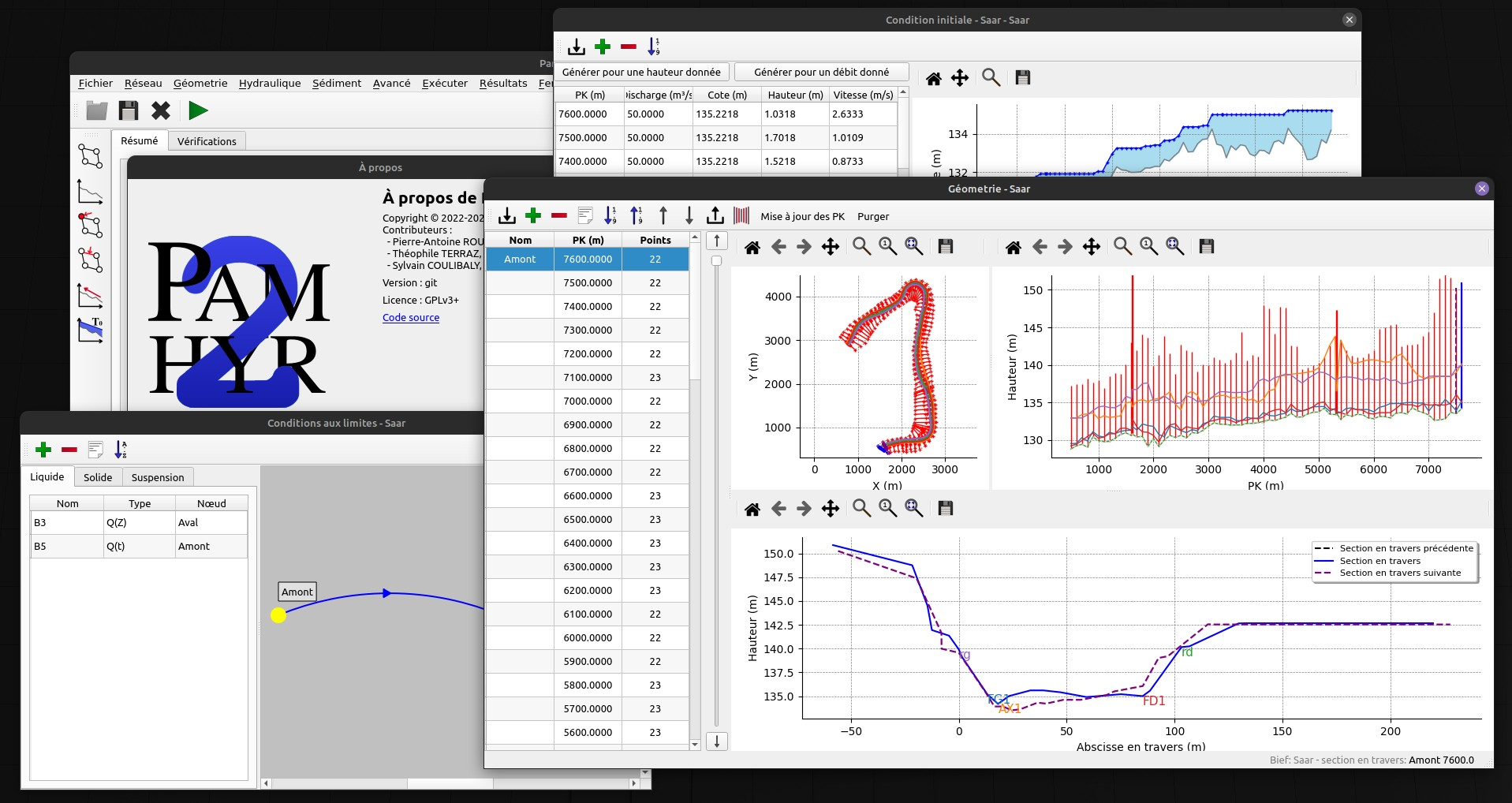Pamhyr2
Pamhyr2: A Graphical User Interface for 1D Hydro-Sedimentary Modelling of Rivers (publication, preprint).

In numerical river simulation, one-dimensional models are commonly used to study water level and discharge for large domains or long time series. These models are less time-consuming than two- and three-dimensional numerical models, and require fewer input parameters and allow ensemble runs. To build a one-dimensional hydraulic model, a pre- and post-processing tool is needed for creating reach geometry, specifying initial and boundary conditions, friction coefficients and other numerical parameters. Such a tool needs to ensure the consistency of the model and provide a user-friendly graphical user interface. In this article, we present Pamhyr2, the fully rebuilt version of the PAMHYR modelling platform. It is developed using Python, PyQt and Matplotlib. Pamhyr2 is free and open-source, multilingual, cross-platform (Linux, Windows) and is generic enough to accept various one-dimensional solvers. Pamhyr2 includes and enhances all the features from the previous version: multiple-reach modelling, geometry definition from cross-section data, initial and boundary conditions, friction coefficients, hydraulic structures, lateral inflow, punctual intake and the results visualization window. In addition, this version includes new features such as pollutants modelling, bed-load and bed evolution. We describe several windows: the creation of sedimentary layers in the river bed, the sediment characteristics for each layer, the sediment, and pollutant boundary conditions and the lateral inputs. These functionalities are illustrated with simple examples. We finally show the visualization windows for bed evolution.
Source Code
Pamhyr2 is hosted on INRAE gitlab (Gitlab Irstea). See the repo here.
git clone https://gitlab.irstea.fr/theophile.terraz/pamhyrLicense
Pamhyr2 is Free Software under GNU GPL3+